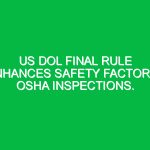In today’s fast-paced world, where industries are constantly pushing the boundaries of innovation and productivity, the importance of Health Safety and Environment (HSE) cannot be overstated. HSE encompasses a wide range of practices designed to ensure the well-being of employees, the public, and the environment from potential hazards associated with workplace activities. Understanding the risks involved in HSE is crucial for creating a safe, healthy, and sustainable working environment. This article delves into the various aspects of HSE risks, offering insights into how businesses and individuals can navigate these challenges effectively.
Identifying HSE Risks
The first step in managing HSE risks is identifying them. Risks in the HSE domain can be broadly categorized into three areas: Health risks, Safety risks, and Environmental risks. Health risks involve factors that can lead to illness or health issues among employees, such as exposure to hazardous substances or poor ergonomic practices. Safety risks encompass conditions or actions that could result in accidents or injuries, like slips, trips, and falls, or machinery-related hazards. Environmental risks are those that impact the surrounding environment, including pollution, waste management issues, and resource depletion.
Understanding these risks requires a comprehensive approach, including regular risk assessments, employee feedback, and staying updated with industry standards and regulations. By identifying potential hazards early, organizations can implement preventive measures to mitigate risks effectively.
Strategies for Mitigating HSE Risks
Once risks have been identified, the next step is to develop and implement strategies to mitigate them. This involves a combination of training, policy development, and technological solutions. Training employees on HSE best practices is essential for fostering a culture of safety and environmental responsibility. Policies and procedures should be established to guide safe work practices and ensure compliance with regulatory requirements. Additionally, investing in technology, such as safety equipment and pollution control devices, can significantly reduce the likelihood of accidents and environmental harm.
Effective communication is also key to mitigating HSE risks. Regularly sharing information about potential hazards and the measures in place to address them helps to keep everyone informed and vigilant. Encouraging an open dialogue about HSE concerns can also lead to innovative solutions and improvements in risk management practices.
Regulatory Compliance and HSE Risks
Adhering to regulatory requirements is a fundamental aspect of HSE risk management. Governments and international organizations have established a wide range of regulations and standards aimed at protecting workers, the public, and the environment. These include the Occupational Safety and Health Administration (OSHA) standards, the Environmental Protection Agency (EPA) regulations, and the ISO 14001 and ISO 45001 standards for environmental and occupational health and safety management systems, respectively.
Compliance with these regulations not only helps to prevent legal issues and financial penalties but also enhances an organization’s reputation and competitiveness. It demonstrates a commitment to health, safety, and environmental stewardship, which can be a significant factor in attracting and retaining employees and customers.
Emerging Challenges in HSE Risk Management
The HSE landscape is continually evolving, with new risks emerging as industries and technologies advance. For instance, the rise of digital technologies and automation presents new challenges in terms of cybersecurity and worker displacement. Climate change and resource scarcity also pose significant environmental risks, requiring innovative approaches to sustainability and resource management.
Staying ahead of these challenges requires ongoing vigilance and adaptability. Organizations must be proactive in identifying emerging risks and agile in updating their HSE strategies to address them. This may involve investing in research and development, engaging with stakeholders, and participating in industry forums and partnerships to share knowledge and best practices.
Conclusion: Key Points in Understanding HSE Risks
Understanding the risks in Health Safety and Environment (HSE) is a complex but essential task for ensuring the well-being of employees, the public, and the planet. Identifying these risks involves a thorough assessment of health, safety, and environmental hazards. Mitigating these risks requires a multifaceted approach, including training, policy development, technological solutions, and effective communication. Compliance with regulatory standards is also crucial for managing HSE risks effectively.
As the HSE landscape continues to evolve, organizations must remain vigilant and adaptable to address emerging challenges. By fostering a culture of safety, health, and environmental responsibility, businesses can not only protect their workforce and the environment but also enhance their competitiveness and reputation in the marketplace.
In summary, understanding and managing HSE risks is a dynamic and ongoing process. It demands a commitment to continuous improvement and collaboration among all stakeholders. By prioritizing health, safety, and environmental protection, organizations can create a sustainable future for themselves and the communities they serve.


